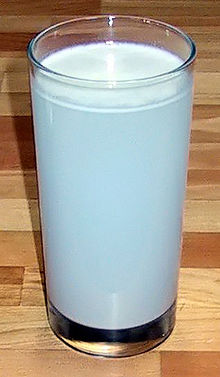Mixture

In chemistry, a mixture is a substance made by combining two or more different materials without a chemical reaction occurring (the objects do not bond together).
While there are no physical changes in a mixture, the chemical properties of a mixture, such as its melting point, may differ from those of its components. Mixtures can usually be separated into its original components by mechanical means. Mixtures are either homogeneous or heterogeneous.
Mixtures are the product of a mechanical blending or mixing of chemical substances like elements and compounds, without chemical bonding or other chemical change, so that each ingredient substance retains its own chemical properties and makeup.[1]
Heterogeneous mixtures are mixtures with non-uniform composition. The parts of a heterogeneous composition can be mechanically separated from each other. Examples include salad, trail mix, sand, salt mixed with sand, and soil.
Suspensions
A heterogeneous mixture is where it is not evenly distributed within the mixture. A suspension is when the particles of one substance are suspended in the other substance (the two substances do not mix into a 'seam-less' mixture- a 'whole'). An example of a suspension is putting table salt in water. You can see the water as a separate substance from the grains of salt (the salt is obviously not blended with the water).
Colloidal dispersions
Colloids are heterogeneous mixtures in which the particles of one or more components have at least one dimension in the range of 1 to 1000nm, larger than those in a solution but smaller than those in a suspension.. Colloids are the same as suspensions, except they don’t leave sediments.[2] In general, a colloid or colloidal dispersion is a substance with components of one or two phases. It creates the Tyndall effect when light passes through it. A colloid will not settle. Jelly, milk, blood, paint, fog,shampoo and glue are examples of colloid dispersions.
Mixtures and compounds
A compound is not a mixture. A compound has very different properties than the elements it is made of, but a mixture contains several substances which keep their properties.
See also
- Concrete
- Colligative properties
- Molar solution
- Percentage solution
- Plasticizer
- Separation process
- Solubility equilibrium
- Superplasticizer
- Suspension (chemistry)
- Water reducer
Bold text
References
IUPAC, Compendium of Chemical Terminology, 2nd ed. (the "Gold Book") (1997). Online corrected version: (2006–) "mixture". doi:10.1351/goldbook.M03949
